Q
What's the Capacity of Honda City Hatchback's Battery?
Not all Honda City Hatchback models are equipped by a battery. Only the hybrid versions, namely the 2024 Honda City Hatchback RS e:HEV and the 2022 Honda City Hatchback RS e:HEV, are equipped with batteries. The battery capacity of both models is 1.3 kWh. The battery type of the 2024 Honda City Hatchback RS e:HEV is a lithium iron phosphate battery, while the 2022 Honda City Hatchback RS e:HEV uses a lithium-ion battery. Hybrid cars like these combine the battery with the engine to provide power. Compared with traditional gasoline-only cars, this can improve fuel efficiency and reduce emissions.
Special Disclaimer: This content is published by users and does not represent the views or position of PCauto.
Related Q&A
Q
What's the Reslae Value of Honda City Hatchback?
The resale value of the Honda City Hatchback is influenced by multiple factors, including the vehicle's age, condition, mileage, market demand, and configuration version. Generally speaking, Honda models have an above - average resale rate in the local market.
Take the City Hatchback launched in 2021 as an example. The new car price of the entry - level 1.5 S is about RM75,000. After three years of use, the second - hand price is approximately between RM55,000 and RM60,000 (depending on the vehicle's condition), which means it retains about 70% - 75% of its original value. If you choose the higher - spec V or RS versions, the residual value may be slightly higher, but it is also affected by mileage and maintenance records.
The Honda brand is quite popular in the Malaysian second - hand car market, especially the City series with a vehicle age of less than five years. Due to its fuel economy and reliability, there is a consistent demand for them. It is recommended that before selling your car, you ensure regular maintenance, keep a complete maintenance record, and refer to the recent transaction prices of the same model to get a more reasonable second - hand valuation. However, the actual price still depends on market fluctuations and the buyer's bargaining situation.
Q
What's the Engine Displacement of Honda City Hatchback?
The Honda City is available in both gasoline and gasoline hybrid (HEV, MHEV) versions. All models are equipped with an engine with a displacement of 1498cc, which is equivalent to 1.5 liters. This engine size strikes a balance between power and fuel efficiency, making it suitable for daily commuting and various driving needs.
The 1498cc gasoline engine can deliver a maximum power of 121 horsepower and a peak torque of 145 Nm. It is paired with a Continuously Variable Transmission (CVT) that enables smooth gear shifts.
In the gasoline hybrid RS e:HEV model, the 1498cc engine works together with an electric motor. The engine has a maximum power of 98 horsepower and a torque of 127 Nm, while the electric motor provides an additional 109 horsepower and 253 Nm of torque. The combined power output offers better acceleration performance.
Q
What Engine Is Equipped by Honda City Hatchback?
The two - door version of the Honda Fit offers different engine options. Some models are equipped with a 1.5 - liter naturally aspirated gasoline engine, with a naturally aspirated (NA) intake system. The engine has a displacement of 1,498 cc, generating a maximum power of 89 kW at 6,600 rpm and a peak torque of 145 Nm at 4,300 rpm, with a maximum horsepower of 121 hp. The vehicle is also equipped with a continuously variable transmission (CVT).
There is also the RS e:HEV model. It is equipped with a 1.5 - liter gasoline engine and a hybrid system. The engine itself can produce a maximum power of 72 kW at 5,600 - 6,400 rpm and a torque of 127 Nm at 4,500 - 5,000 rpm, with a maximum horsepower of 98 hp. The electric motor can provide a total power of 80 kW, a torque of 253 Nm, and a maximum horsepower of 109 hp. The battery type is a lithium - iron phosphate battery with a capacity of 1.3 kWh, and it uses an electronic continuously variable transmission (E - CVT). These engines strike a balance between performance and fuel economy to meet various driving needs.
Q
What's the Type of Honda City Hatchback's Gearbox?
The type of the Honda City's gearbox varies depending on the model and its powertrain. For gasoline-powered models, the transmission type is CVT (Continuously Variable Transmission), providing a smooth driving experience by continuously adjusting the gear ratio, which helps optimize fuel efficiency and power output according to different driving conditions.
For hybrid models like the Honda City RS e:HEV, it is equipped with an E-CVT (Electronically Controlled Continuously Variable Transmission). The E-CVT is specifically designed for hybrid vehicles. It coordinates the power output between the engine and the electric motor, allowing smooth switching between different driving modes such as pure electric drive, engine drive, and hybrid drive, thereby enhancing the overall efficiency and performance of the hybrid system.
Q
What's the PCD Size of Honda City Hatchback?
The PCD (Pitch Circle Diameter) of the Honda City Hatchback is 5x114.3, which means the wheel's bolt holes are arranged in a circle with a diameter of 114.3 mm and consist of 5 bolt holes. This specification is the same as that of the Honda Jazz, certain City Sedan variants, and some mainstream Japanese models in the Malaysian market (such as the Toyota Vios and Nissan Almera), providing ample options for wheel upgrades or replacements.
When changing wheels or tires, owners should not only consider the PCD but also ensure compatibility with the center bore (CB) size, offset, and tire specifications to maintain safety and handling stability. If upgrading to larger or more customized wheels, it is advisable to consult a professional tire shop or an authorized Honda service center to avoid purchasing unsuitable rims that could compromise driving safety.
Q
Does Honda City Hatchback Support Apple Carplay?
The Honda City is equipped with Apple CarPlay. The all-new 2024 Honda Fit hatchback has been launched in Malaysia. The vehicle features an 8-inch multimedia touchscreen on the center console, which supports wireless connection with Apple CarPlay and Android Auto, allowing users to connect their iPhones to the car's infotainment system. Once connected, drivers can directly access various functions of their iPhones, such as navigation, music playback, making calls, and sending text messages, through the car's touchscreen or voice control. By integrating the familiar iPhone interface with the vehicle system, it enhances the in-car experience. This is a very convenient feature for those who rely on their iPhones for various daily tasks and want to achieve seamless connectivity while driving.
Q
What's the Brand of Honda City Hatchback's Tire?
The factory-fitted Honda City Hatchback in the Malaysian market is primarily equipped with Yokohama's BluEarth-GT series tires (specifically 185/55 R16 or 185/60 R15, depending on the variant). These tires emphasize fuel efficiency, durability, and wet-road safety, aligning with the City Hatchback's positioning as an economical family car. However, depending on the production year or promotional packages, some vehicles may be equipped with tires of other brands such as Dunlop or Bridgestone. The exact tire model should be verified based on the factory configuration at the time of purchase.
For owners looking to replace their tires, other brands in the same specification—such as Michelin Energy XM2+ or Continental CC6—can be considered. These are popular energy-saving and comfort-oriented tire options in the Malaysian market, offering a balance between fuel efficiency and quiet performance. Regular checks on tire wear and pressure are recommended, along with adhering to the manufacturer's suggested replacement intervals to ensure driving safety.
Q
Is Honda City Hatchback a Good Car? Learn the Pros and Cons Here
The Honda City Hatchback has many advantages and is a great car. In terms of appearance, it features a delicate, stylish, and sporty design. For instance, some models are equipped with a honeycomb radiator grille and an added rear spoiler. The RS version also has unique trim panels and side skirts, making it highly recognizable. The interior details have been optimized. The RS version has an all - black interior. In some models, the instrument panel has been upgraded to a 4.2 - inch TFT color screen. The central control touch - screen host is 8 inches, and the pixels of the rear - view camera have been improved.
In terms of safety and intelligent assistance, the entire vehicle lineup comes standard with multiple safety systems, such as ABS anti - lock braking, vehicle stability control, lane departure warning, and autonomous emergency braking. There's also an ISO FIX child seat interface. Some models are equipped with the Honda Sensing function, providing comprehensive protection for the driver. Additionally, some models have added practical features like wireless CarPlay and a wireless charging panel.
In terms of power, there are multiple options. The 1.5L naturally aspirated engine paired with a CVT transmission offers a smooth power output, which is sufficient for daily driving. The hybrid system in the e:HEV RS model delivers excellent power and has relatively low fuel consumption. However, it also has some drawbacks. For example, the rear brakes of some models are drum brakes, which are slightly inferior to disc brakes in terms of braking performance. The rear - seat space may feel a bit cramped for taller passengers. Overall, the Honda City Hatchback performs well in terms of appearance, safety, and power, and can meet the daily needs of most users.
Q
What's the Width of Honda City Hatchback?
The Honda City has a width of 1,748 millimeters. This B-segment hatchback offers a comfortable interior space for passengers, and its width helps create a spacious cockpit, providing sufficient shoulder room for both front and rear passengers and enhancing the overall comfort during the drive. Whether it's a short trip around the city or a long-distance journey, this width ensures a more enjoyable driving and riding experience. Moreover, the vehicle's width also plays a certain role in its overall stability and handling on the road.
Q
What's the Road Tax of Honda City Hatchback? How to Calculate It?
The Honda City Hatchback provides petrol and hybrid versions, and the road tax calculation methods vary for different versions. For the petrol version, since its displacement is 1498cc, which is less than 1800cc, according to regulations, it is required to pay 75% excise duty. The specific amount of road tax needs to be comprehensively calculated in combination with the actual value of the vehicle and other factors. Generally speaking, the road tax price to be paid is calculated by multiplying the vehicle value by the 75% excise duty rate and then adding other possible tax items (such as the normal 10% sales tax, which has been waived during the current pandemic).
As for the hybrid version, currently all electric vehicles (including hybrids) registered in Malaysia are exempt from road tax. The tax - exemption period will expire at the end of 2025. Starting from January 1st, 2026, a new policy will be implemented. The road - use tax rate for electric vehicles will be divided into different levels according to engine power: for vehicles with an engine power below 100kW, for every additional 10kW of power, the tax increases by 10 ringgit; for vehicles with an engine power between 100kW and 210kW, for every additional 10kW of power, the tax increases by 20 ringgit; for electric vehicles with an engine power between 210kW (excluding 210kW) and 310kW, for every additional 10kW of power, the tax increases by 30 ringgit. Therefore, the road tax for the Honda City Hatchback hybrid version after 2026 needs to be calculated based on its specific engine power.
Latest Q&A
Q
When Was the Proton Saga Released?
The latest version of the Proton Saga was officially launched on September 14, 2023. It came with several upgrades in design, interior, and tech features. You’ll notice a refreshed front grille, new LED daytime running lights, and a more modern cabin layout.
Even with these updates, the Saga keeps its affordable price point, which is why it’s still one of the most popular budget sedans in Malaysia. It’s built for daily use, whether you're commuting to work or driving with family.
If you want to check out the specs or any current promotions, I’d suggest visiting the official Proton website or stopping by your nearest Proton showroom. Seeing the car in person can help you feel the difference — especially now that it offers better ride comfort and fuel efficiency too.
It’s no surprise the Saga remains a top pick. With proven durability and a wide service network, it continues to be a solid choice for many Malaysian drivers.
Q
What Is the Length of the Proton Saga?
The Proton Saga measures 3995 mm in length. That puts it right in the compact sedan category, which is perfect for daily use around town. Its size makes it easy to handle in narrow streets and tight parking spots, especially in busy city areas.
The Saga keeps things practical, just like you’d expect from a national car. Its 2465 mm wheelbase gives decent legroom in the back, and you can choose between a 1.3L or 1.6L engine, depending on whether you want better fuel economy or a bit more power.
In Malaysia, car size isn’t just about comfort. It also affects how much road tax you pay. For example, the 1.3L model costs RM90 per year, while the 1.6L version goes up to RM280. That’s something to keep in mind when picking your variant.
If you're comparing with other cars like the Perodua Bezza, which is 4150 mm long, the Saga is a little shorter — better if you often park in tight spots, but still roomy enough for a small family.
And since Malaysia gets a lot of rain, the 150 mm ground clearance and good anti-rust treatment help the Saga handle rough roads and humid weather pretty well. Little things like that can make a big difference over time.
Q
How Much Does It Cost to Service a Proton Saga?
If you're driving a Proton Saga, good news — it's one of the more affordable cars to maintain in Malaysia. For a regular service, which includes an oil change, new oil filter, and basic checks, you’re looking at around RM150 to RM250. The price can vary depending on your location and whether you use original or third-party parts.
I’d recommend checking the latest pricing on the Proton app or by calling an official service center near you. That way, you know what to expect before you go.
Regular servicing is super important, especially for budget-friendly cars like the Saga. Keeping up with oil and filter changes helps protect your engine. If you skip it, you might end up with higher fuel use or even mechanical issues.
Since Malaysia’s weather is hot and rainy most of the year, it’s also a good idea to check your coolant and brake fluid regularly. Right before rainy season, take a look at your wipers and make sure your tires can still drain water well.
Service costs do go up a bit at certain mileage points. For example, at 40,000 km, you may need to change spark plugs and transmission fluid. That costs more, but it helps avoid bigger repair bills later on.
If you're on a tight budget, look out for Proton's seasonal promos or use membership points to get some discounts. Some service centers even offer free basic vehicle checks. It’s worth asking.
Q
How Much Does It Cost to Maintain a Proton Saga?
The Proton Saga is one of the most budget-friendly cars to maintain in Malaysia. That’s part of why it’s so popular. If you're trying to keep your car running well without spending too much, it’s a solid choice.
According to Proton’s official service guide, you need to do basic servicing every 6 months or 10,000 km, whichever comes first. This usually includes engine oil and oil filter changes. The cost is around RM150 to RM250, depending on whether you use original or certified parts.
Every 20,000 km, you may need extra work like changing the brake fluid or coolant. This bigger service may cost between RM400 and RM600. Proton has many service centers across Malaysia and offers a 5-year unlimited mileage warranty. That helps lower the long-term ownership cost.
Some drivers choose to service their car outside authorized centers to save money. While that might work short-term, it could affect your warranty. I’d recommend using Proton’s official service network if you want peace of mind.
Regular maintenance also helps your engine last longer and keeps the car’s resale value stable. That’s especially important for a popular model like the Saga. Keep in mind, your actual cost may change depending on how and where you drive. If you often drive short distances, your engine oil might wear out faster. So it’s smart to adjust your service schedule based on your own driving habits.
Q
What Is the Tire Size for the Proton Saga?
The standard wheel size of the Proton Saga is 15 inches, paired with The standard wheel size for the Proton Saga is 15 inches, and it comes with 185/55 R15 tires. This setup offers a good balance between comfort and fuel efficiency. It works well for daily driving in Malaysian cities and handles mixed road conditions with ease. Wheel size affects more than just looks. It also plays a role in how the car handles and how much fuel it uses. A larger wheel can give you better grip in corners, but a smaller one usually absorbs bumps better and costs less to replace. The Proton Saga’s wheels are also designed with Malaysia’s wet climate in mind. They help maintain good traction, even on slippery roads. If you're thinking about upgrading the wheels, it’s best to stick to the size recommended by Proton. This keeps your suspension system and speedometer accurate. Also, be aware that JPJ rules in Malaysia only allow upgrades within 15% of the original wheel size. Going beyond that may not be legal. Cars in the same class, like the Perodua Bezza, use similar tire sizes. So this setup is pretty standard for compact sedans. It keeps running costs low while still giving you solid everyday performance.
View MoreRelated News
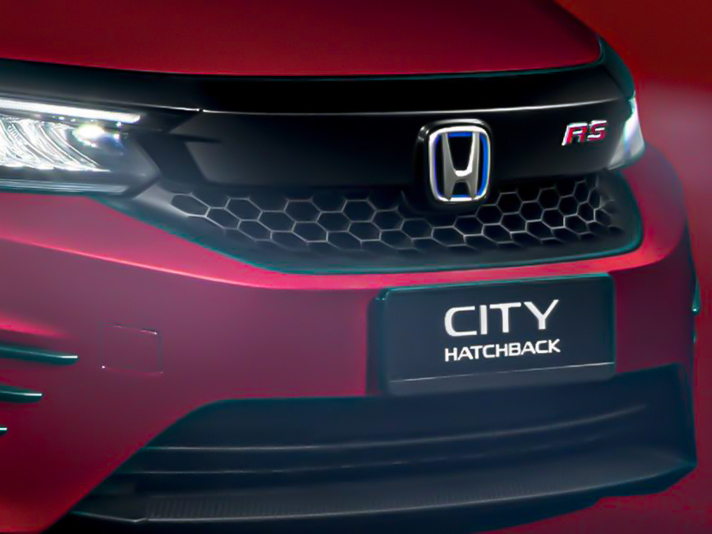
Is Honda City Hatchback Still Worth Buying in 2025?
JohnJun 26, 2025
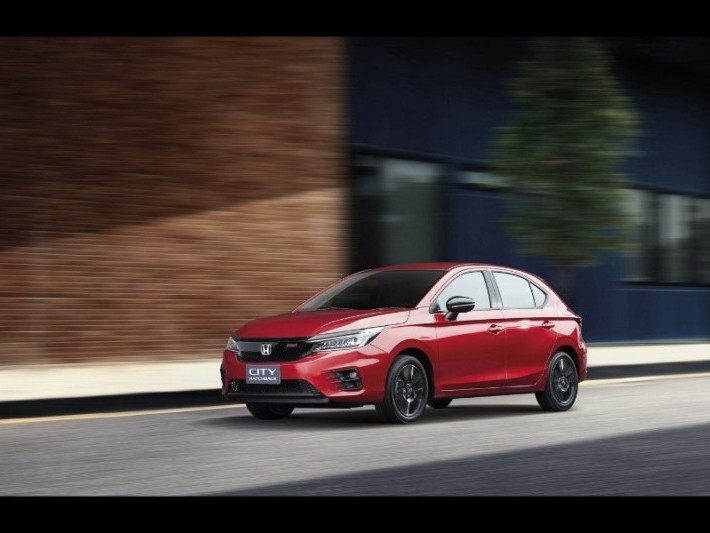
High Cost-Performance: Is the Honda City Hatchback Worth Buying? Dynamic Experience Revealed!
AshleySep 23, 2024
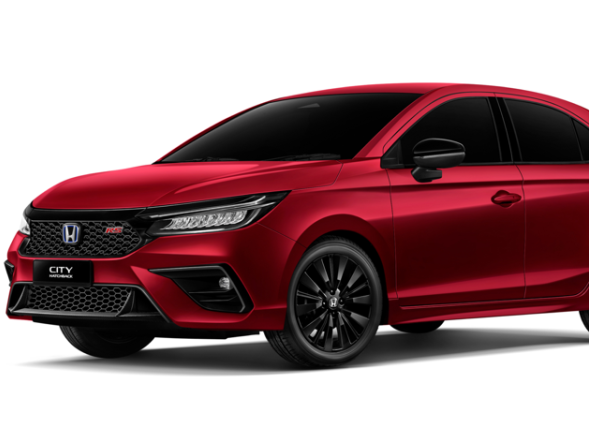
From Jazz to City Hatchback: The Perfect Transformation of Honda Hatchback
LienJun 4, 2024
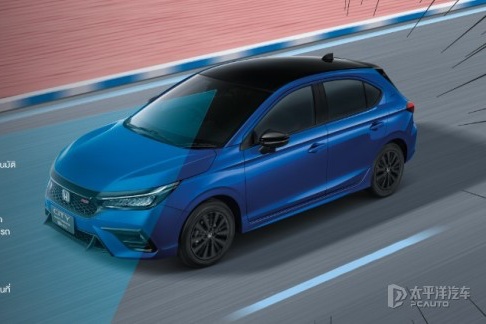
Honda City e HEV Hatchback RS: Fuel Efficiency
AshleyMay 4, 2024
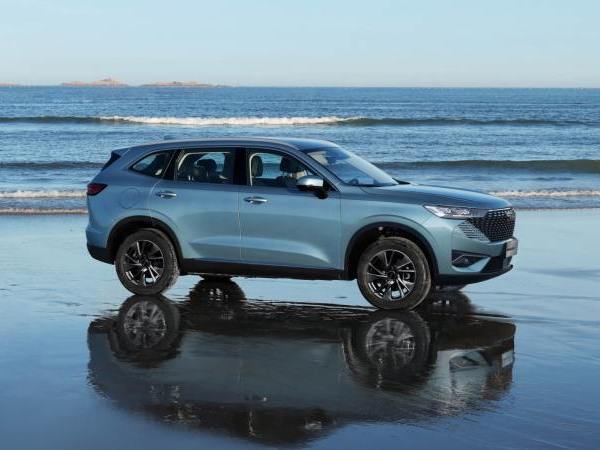
HAVAL H6 HEV Test Drive: A Budget-Friendly Alternative to CR-V e:HEV
WilliamJun 25, 2025
View More











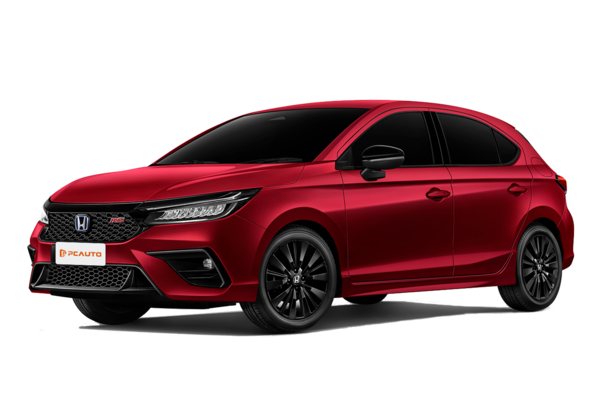
 Cars
Cars




Pros
Cons